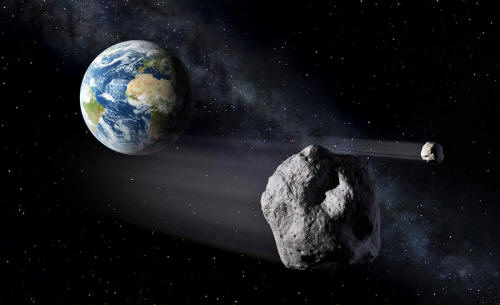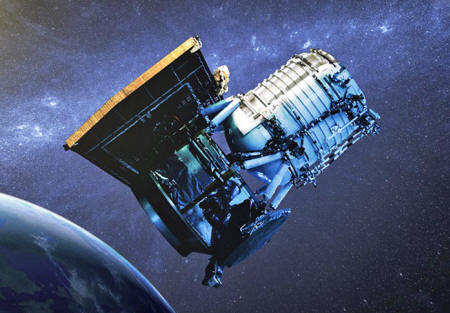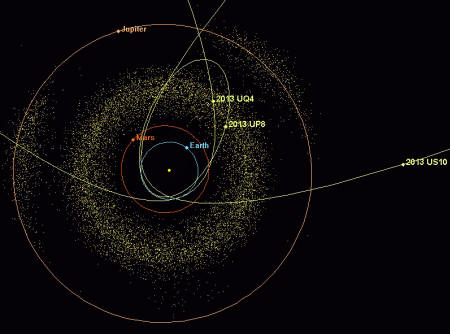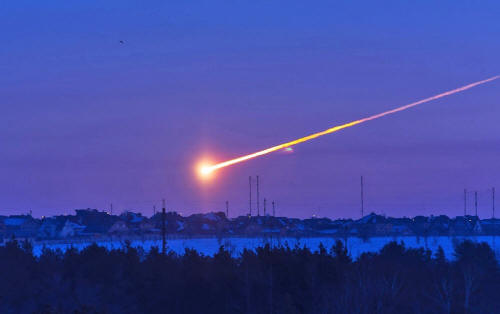|
by Matt Williams
from
UniverseToday Website
Near-Earth Asteroid passing by Earth.
Credit: ESA
Of the more than 600,000 known asteroids in our Solar System, almost 10 000 are known as Near-Earth Objects (NEOs).
These are asteroids or comets whose orbits bring them close to Earth's, and which could potentially collide with us at some point in the future. As such, monitoring these objects is a vital part of NASA's ongoing efforts in space.
One such mission is NASA's Near-Earth
Object Wide-field Survey Explorer (NEOWISE),
which has been active since December 2013.
Of these, eight were classified as
potentially hazardous asteroids (PHAs),
based on their size and how closely their orbits approach Earth.
In February of 2011, the mission ended and the spacecraft was put into hibernation.
As of December 2013, it was reactivated for the purpose of surveying Near-Earth Objects (i.e. comets and asteroids) for the remainder of its service life.
The Wide-field Infrared Survey Explorer (WISE) has been scanning the entire sky in infrared light, searching for objects that could threaten Earth.
Credit: NASA/JPL
James Bauer, the mission's deputy principal investigator, explained NEOWISE's operations to Universe Today via email:
Paired with ground-based telescopes that examine space in visible-light wavelengths, the data it has provided has told us much in the past two years about asteroids within our Solar System.
Since beginning its "second life", the NEOWISE mission has taken millions of images of the sky and measured more than 19,000 asteroids and comets.
discovered by NEOWISE in 2013: 2013 UQ4, 2013 US10, and 2013 UPS.
Credit:
NASA/JPL-Caltech.
As Dr. Amy Mainzer, the principal investigator of the NEOWISE mission at NASA's Jet Propulsion Laboratory, told Universe Today via email:
Of the 19,000 asteroids studied, the mission team was able to identify 439 of them as NEOs, and further determined that eight of them can be classified as potentially hazardous asteroids (PHAs).
But before anyone gets to worrying that
these objects might collide with us someday, it would be good to
keep some statistics in mind.
What's more, the vast majority (over 13,000) have only been discovered since the year 2000, and over half since 2010.
Of these, roughly half (7077) measure 140 meters in diameter.
Picture of the asteroid that exploded over Cherlyabinsk on Feb 15, 2013.
Credit: Tuvix/Youtube
But not so much when you consider that of these, only 879 are large enough to ever pose a serious threat to Earth (i.e. measuring 1 km or more in diameter).
And whereas small objects (i.e. those
averaging 4 meters or 13 feet in diameter) strike Earth about once a
year, asteroids measuring 1 km or more in diameter have been known
to hit Earth at an average of only twice every one million years.
However, the vast majority of the
injuries caused by the airburst explosion were due to a lack of
prior warning. Had the population been warned in advance, it is
likely that most (if not all) of the injuries could have been
prevented.
And thanks to NEOWISE, we've now got
tabs on eight more of them. And until such time as we can create
some kind of orbital defense platform to shoot incoming PHAs (I'm
thinking guided missiles and laser guns!) knowing is all of the
battle!
|





